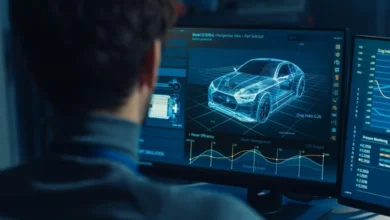Extension cords are a practical way to increase the range of electrical power, whether you’re powering interior appliances or outside tools and equipment. However, inappropriate use of extension cables can result in major safety hazards such as electrical shocks, fires, or equipment failure. Understanding how to use extension cords properly at home and outdoors is critical to avoiding accidents and extending the life of your equipment.
Whether you’re working on a home repair project or enjoying outdoor activities, these practical suggestions can help you utilize extension cables efficiently and safely, reducing possible hazards.

Using Extension Cords At Home
1. Do not cover extension cords during use
Overheating is one of the most significant factors to consider when preventing electrical fires. Extension cables can quickly overheat depending on the environment in which they are utilized. You should always provide plenty of space around an extension cord for its whole length. In addition to a higher danger of overheating, damage to a covered extension cord can lie undetected for considerably longer.
If you use an extension cable indoors, avoid running it through walls or ceilings to power another area. Similarly, avoid placing extension cords underneath carpets, rugs, or furniture. When you utilize an extension cable in these ways, it is not only dangerous because it traps heat, but it also increases the likelihood that others in your home will step on covered extension cords. Over time, this might cause the internal wires to deteriorate.
2. Do not use indoor extension cords outside
Outdoor extension cords are insulated with far more durable materials than those designed for indoor usage. This is required to protect the cord from moisture, oil and chemical spills, and other harmful external conditions. Most outdoor extension cords use a wider gauge wire because they frequently need to transport current over a greater distance.
These fundamental differences demonstrate why an outdoor extension cord can be used indoors but should never be used outside. The NEMA 5-15R is a popular household type suitable for normal 120V applications. Always verify the cord’s labeling to be sure it matches the power needs of the gadgets you plan to use.
3. Never chain extension cords together

Chaining extension cables together causes a slew of new issues and should always be avoided. A key problem of chaining extension cords is that the resistance of the series of cords grows as the length increases, generating greater heat and posing a fire risk. The overall power available to the linked appliance is limited, and your breaker may not trip if a fault occurs in one of the cords.
When you connect extension cables in series, multiple weak places are created in the connection since the connectors can easily pull apart. Performing any work that needs mobility is nearly impossible because the cords can sometimes be pulled apart. Worse, the extension cords may spark when pulled apart, resulting in a fire if anything flammable is close.
4. Inspect extension cords regularly
Even if you follow every safety tip for using extension cords, there is no replacement for inspecting them regularly before usage. To accomplish this, you must be able to recognize the indicators of a damaged cable.
Check that there is no exposed wiring on either end of the cord near the plugs; this damage is easily caused when extension cords are pulled out of sockets. Next, inspect the cord’s length for nicks, crimps, or melted insulation. Even if the extension cable looks to be in good shape, removing the ground prong renders it unsafe to use.
Using Extension Cords Outdoors
1. Use extension cords designed exclusively for outdoor use
Always use extension cords designed expressly for outdoor usage, as they are composed of materials that can survive moisture, temperature changes, the sun, and even foot activity. You must choose the correct cord for the work at hand. Cords are not one-size-fits-all, so choose one that can handle the wattage of all connected devices. Keep in mind that the larger the wire, the higher the current capacity.
An outdoor-use grade indicates that the cord has additional layers of insulation to protect the fragile wires within from freezing temperatures, water, and snow. The extra layers of shielding protect the wires from any damage that could cause an accident.
Outdoor extension cords are generally built to withstand the elements. Although outdoor extension cables are durable, you should not leave them outside for more than a day or two. Leaving something outside for an extended amount of time increases the likelihood of your cord breaking down, which can lead to sparking, fire, and shock. Finally, never use indoor extension cords outside because they are not designed for rigorous use.
2. Check your outdoor receptacle
Another great tip for using extension cords outside is to make sure the receptacle outside your house is safe to use. The receptacle must be outfitted with a Ground Fault Interrupter (GFI) or Ground Fault Circuit Interrupter. The GFI is a safety outlet designed to prevent disastrous electrical accidents, such as shocks and short circuits, which can lead to fires. The GFI frequently monitors the amount of electric current passing via a particular circuit. The outlet is designed to detect a lack of current and promptly trip the circuit.
To check for the GFI, locate all the receptacles outside your home and look for a little button on each. This button can be used to reset the receptacle. Make sure this button is functioning correctly. Not all receptacle models are alike. Your receptacle’s GFI button may be located at the junction of the breaker box.
3. Connect the extension cord to an outlet with the least traffic
If possible, run the extension line through low-traffic areas. This is a crucial safety precaution because it reduces the likelihood of falls and tripping mishaps.
In the end!

Creating a memorable logo combines creativity, strategy, and awareness of your brand’s key principles. By emphasizing simplicity, distinctiveness, and relevancy, you can design a logo that catches attention and establishes a long-term connection with your audience.
Remember to keep your target market in mind, experiment with different design components, and solicit feedback to help you improve your concept. A well-crafted logo is a strong tool that serves as the cornerstone for your brand’s identity, allowing your company to leave a lasting impression in customers’ minds. Invest properly and let your logo tell your company’s narrative.




